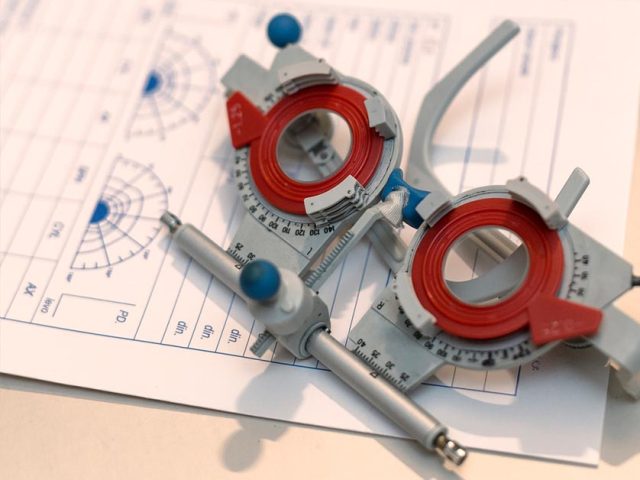Prescription lenses are made to correct vision problems, such as nearsightedness (myopia), farsightedness (hyperopia), astigmatism and presbyopia. As such, the process of making prescription lenses involves several steps. Continue reading to learn about prescription lenses, how they are made and the different types available.

What Are Prescription Lenses?
Prescription lenses are tailored spectacles that correct or improve the wearer’s vision. A dedicated optometrist assesses the unique needs of your eyes and prescribes lenses that adjust how light gets into your eyes, helping you see better.
The Process of Making Prescription Lenses
Making prescription lenses involves several steps, from the initial eye examination to the final fitting of the lenses into the frames. Here is a general overview of the process.
Eye Exam
The process begins with an eye examination by an eye doctor. During the exam, they will determine your specific vision prescription, which includes measurements for each eye, such as sphere power (for nearsightedness or farsightedness), cylinder power (for astigmatism) and axis (the orientation of astigmatism correction). If you have presbyopia, your doctor may also determine your reading prescription.
Eye exams can also check for eye diseases so your doctor can prescribe the appropriate solution. For those with special eye conditions, you may need to see a specialist, such as a scleral optometrist, to get the treatment and visual clarity your eyes need.
Lens Crafting
After the examination, your optometrist sends the prescription to a lab where your lenses will be crafted. Here, a machine cuts the lens into the shape advised by your optometrist based on your prescription’s specifications.
Lens Finishing
Lastly, your lenses undergo additional treatments. These can include anti-reflective or scratch-resistant coatings, color tints, or UV protection. These coatings improve the clarity and durability of your lenses.
Types of Prescription Lenses
There are various types of prescription lenses available to correct vision problems and suit individual needs. These lenses are typically used in eyeglasses and may include single-vision lenses, with a single prescription power throughout the entire lens. They correct nearsightedness, farsightedness, or astigmatism.
Bifocals have two different prescription powers in a single lens. The upper part corrects distance vision, while the lower is for near vision. They are commonly prescribed for individuals who have difficulty seeing both up close and at a distance. This condition is often seen in people over 40 with presbyopia.
There are other specialty lenses available for specific needs, such as sports goggles and lenses for low-vision individuals. The type of prescription lens you need depends on your vision correction requirements and lifestyle. An eye care professional will assess your vision and recommend the most suitable lens type for your needs.
Lumen Optometric is one of the area’s leading eye specialists. From eye exams to dry eye treatment, you can count on us to provide quality eye care. We also offer neurolens treatment. Call us at (626) 921-0199 or visit our contact page to book an appointment.
